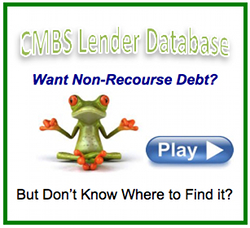Blog
Warning: Use of undefined constant user_level - assumed 'user_level' (this will throw an Error in a future version of PHP) in
/home/zzgspc5zic0z/domains/findthecapital.com/html/wp-content/plugins/ultimate-google-analytics/ultimate_ga.php on line
524
Posted by Lisa Virkus on 2:11 pm in From Find the Capital, Sales and Marketing | 0 comments

Warning: Use of undefined constant user_level - assumed 'user_level' (this will throw an Error in a future version of PHP) in /home/zzgspc5zic0z/domains/findthecapital.com/html/wp-content/plugins/ultimate-google-analytics/ultimate_ga.php on line 524
Warning: Use of undefined constant user_level - assumed 'user_level' (this will throw an Error in a future version of PHP) in /home/zzgspc5zic0z/domains/findthecapital.com/html/wp-content/plugins/ultimate-google-analytics/ultimate_ga.php on line 524
Article by Brent Virkus Senior Managing Director of Find the Capital and CEO of TRiTON Capital Advisory We are constantly getting the same question from our clients and followers… What exactly does “hashtag” this and “hashtag” that mean exactly? To help clear up this whole “hashtag” question/curiosity, we found a article that sheds some light on the subject. The article was written by Tim Mcmullen. Tim is founder and executive creative director of Redpepper. We hope you enjoy… ___________________________ Whether they entertain, confuse or annoy you (or some combination of the three), hashtags do one thing 100% of the time: they make ordinary social media posts clickable. And that means two very important things for brands: your original content becomes searchable, and you have a new opportunity engage your social audience every single time you post. On planet Twitter, hashtags create instant real-time news feeds out of thin air, from first aid and safety responses after #SuperStormSandy to waiting for the #RoyalBaby to make his appearance. Instagram hashtags solicit, through a trendy vintage filter, spontaneous visual testimonials about your brand or event. Facebook, unfashionably late to the hashtag party, is a prime spot for using hashtags as a rallying cry for your cause – even if your cause is a Midnight Madness sale on mattresses. Regardless of the social platform, every hashtag you use should have a job, and you should know what that job is before you hit “post.” Six Ways to Use a Hashtag: 1. To Find New Fans. Your audience clicks on a hashtag for one simple reason: to find more content related to what they’ve just seen. If you want to be there when they search, it’s time to get familiar with the pound sign. That means using your own custom tags to serve up brand-specific collections of posts (think #BobsAwesomeCoffee), and putting some SEO-like strategies in place (think #BrooklynCoffeeShop or #FortGreene) to make sure your posts – and your fans’ posts—show up when someone gets curious and clicks. 2. To Rally Support. If there’s one thing social media users love, it’s showing their support for a cause. When big-box brand Target teamed up with do-good organization FeedUSA, shoppers were more than happy to tell everyone in their social network that the cute #FEEDusa water bottle they snagged at @Target helped to provide meals – 10 million, in fact—to America’s poor. Win/ Win/ Big Win. 3. To Promote the Now. From conference attendees tweeting your brilliant quotes to fans snapping selfies in front of your fab food truck at a street festival– if they’re participating in your event, they’re probably posting about it already. Establish and promote a hashtag for them to use and you’ll create three things: real-time coverage of your event, a collective record of the experience, and an instant promotion targeted to your customer’s nearest and dearest. 4. To Measure ROI. When you make your own hashtag, you create a channel that’s all yours to measure. Sites like hashtracking.com and HootSuite can show your tag’s reach and impressions in just a few clicks. And even though hashtags have more limited potential on Facebook due to the platform’s privacy options, it also brings a new layer to social media ROI— it’s the only one with ad space. While your hashtag’s clicks might not...
read more
Posted by Lisa Virkus on 1:43 pm in Sales and Marketing | 0 comments

Warning: Use of undefined constant user_level - assumed 'user_level' (this will throw an Error in a future version of PHP) in /home/zzgspc5zic0z/domains/findthecapital.com/html/wp-content/plugins/ultimate-google-analytics/ultimate_ga.php on line 524
Warning: Use of undefined constant user_level - assumed 'user_level' (this will throw an Error in a future version of PHP) in /home/zzgspc5zic0z/domains/findthecapital.com/html/wp-content/plugins/ultimate-google-analytics/ultimate_ga.php on line 524
Article by Guy Kawasaki, In his book, What the Plus! Google+ For the Rest of Us, author Guy Kawasaki details strategies, tactics and time-savers to create an effective presence and attract followers, engage the right people, and promote your brand. In this edited excerpt, Kawasaki explains how to get started on Google+, which has garnered over 250 million active users since its beta test in June 2011. Since Google can divert the river and owns the playing field, you may find it hard to avoid Google+. Here’s how to get started: Sign up for a Google account that enables you to use all the Google products. Keep your name simple, which will make it easier for people to remember you and find your Google+ post. The next step is to find people to “circle.” When you’ve circled approximately 50 people, Google+ gets really interesting. This process will only take a few minutes but will yield many hours of enlightenment, engagement, and enjoyment. Google+ provides multiple options to get started. First, you can click on “Find people” to search for people you already know. Don’t be disappointed if all your BFFs (best friends for life) aren’t already on Google+; this is a chance to make new BFFs. Second, you can click on categories of people, such as “Entertainment” or “Fun & Interesting.” Google compiled a list of “Picks” based on the fame and level of activity of the people. You can add these entire preselected circles or individual people. There are a few simple ways to decide whether to circle someone: Does the person have a pleasant profile photo? The lack of a profile photo indicates that the person is clueless, a newbie, or a spammer. When there is a photo, you can infer a lot about the person. How many people have circled the person? Lots of followers doesn’t necessarily mean the person is worth circling, but it’s a pretty good data point. There’s usually a bad reason someone only has a handful of followers. When was the last time the person shared a post? This will show if the person is active on Google+. There’s no sense following someone who isn’t active because the purpose of circling a person is to generate interaction. Are the person’s posts shared by many people, and commented upon? People who share posts that generate more than 10 shares and more than 10 comments tend to be interesting. An easy way to check out a person is to use Chrome, Google’s browser, and install a Chrome browser extension called “CircleCount.” Then, when you mouse-over a person’s name, you’ll see the follower history and the average number of shares and comments. Now that you’ve circled a few people, it’s time to explore how to navigate Google+. The nine buttons in the vertical navigation ribbon on the left side of the page are the primary ways to navigate Google+ itself. Here’s what the buttons do: Home: On Google+, home is where the “stream” is. This button displays your “stream” of what the people you follow have posted. Think of Home as your “news feed.” Profile: When you want to see what you’ve posted, click on this button. It will show you all your posts, and it’s a good way to manually check for new comments on your posts. Explore: This will take you to a...
read more
Posted by Lisa Virkus on 1:17 pm in Running Your Business | 0 comments

Warning: Use of undefined constant user_level - assumed 'user_level' (this will throw an Error in a future version of PHP) in /home/zzgspc5zic0z/domains/findthecapital.com/html/wp-content/plugins/ultimate-google-analytics/ultimate_ga.php on line 524
Warning: Use of undefined constant user_level - assumed 'user_level' (this will throw an Error in a future version of PHP) in /home/zzgspc5zic0z/domains/findthecapital.com/html/wp-content/plugins/ultimate-google-analytics/ultimate_ga.php on line 524
Article by, Allen There are many employees who hate working under their boss and feel that owning their own business will certainly muster their courage and confidence. You can take control over your finances, set goals, reach them and also enjoy the satisfaction of accomplishing what you aim at doing. The current economy has been tough, especially for the small business owners and starting a business of your own, when there are people who have lost their jobs and have been forced to look for new jobs, is something that can’t be dreamt of. As you need a lump sum amount to start off with a new business venture of your own, you often hesitate. Who will offer you funding for your business? How will you manage to start your business without taking out numerous business loans? Are there any tips that you can follow in order to get started? Read on the remaining concerns of the article, if you want to educate your knowledge on the same. Save religiously before starting your new business: Too often it is seen that people move forward to starting a business without enough savings and they take out loans from family, friends, from the bank or from the SBA. All they expect is that they will start repaying the loans with the amount that they accumulate as their profits. Little do they realize that it takes months and years to make enough profit with which you will be able to repay the business loan lenders. As soon as the lender discovers that the business isn’t generating a huge revenue, they will deny to renew it for another year. Therefore it is certainly better to save enough money before starting off with your new business. Start your business on a shoestring budget: Yes, you might have dreamt of taking big business decisions but when it comes to reality, you should think small. Don’t rent a house when you have options of working somewhere else. Studies reveal that all those people who start their business on a very small budget are the ones who flourish later on. They’re the ones who create their goods and services with sweat than cash. Don’t take luxurious business decisions especially when you’re starting off. Understand how you can make profit: When you’re about to start off with a new business organization of your own, you should be able to state in a few sentences how you’re planning to make business profit. As you’re a starter, you need to know the costs, how much money you’ll spend while compensating the employees, paying the rent, purchasing inventory and covering all the other unexpected costs. Only then you can figure out the profit that you will earn every month. These are the numbers that are needed to create a “break-even” analysis. Draft a short but smart business plan: Starting off a business organization requires a well-proof plan and if you still don’t have one, wait for the right time. For most small business organizations, the key portions consist of the plan that will brace you against all odds of the economy. Have all the steps ready so that you can easily move in accordance with your plan and realize your steps. Therefore, in the tumultuous economy, you should arm yourself...
read more
Posted by Lisa Virkus on 2:14 pm in Personal Investing | 0 comments

Warning: Use of undefined constant user_level - assumed 'user_level' (this will throw an Error in a future version of PHP) in /home/zzgspc5zic0z/domains/findthecapital.com/html/wp-content/plugins/ultimate-google-analytics/ultimate_ga.php on line 524
Warning: Use of undefined constant user_level - assumed 'user_level' (this will throw an Error in a future version of PHP) in /home/zzgspc5zic0z/domains/findthecapital.com/html/wp-content/plugins/ultimate-google-analytics/ultimate_ga.php on line 524
Article by, Allen Home investment made easier with 5 important tips Fact that the economy is showing some improvements even if they might be small, has actually got the investors toying with the idea of jumping onto the residential real estate bandwagon again. The low prices make it an all the more beneficial time to actually do so. Now, even though prices might be good to you, fact remains that the days of quick and easy financing have long been over. Plus there’s a really tight credit market out there which makes it all the more difficult to actually secure loans and that too for investment marketing. Now all this can be within your reach when looking to make some home investments if you incorporate some creativity and preparation. 5 Important tips on home investment Well, since you’re looking to seek out financing and that too for residential investment property, then it’s always advisable that you’re equipped with some handy tips to make the process more enduring for you. Check them out. Know your financial standing: The first and foremost thing you should follow is to be careful of the factors that are influencing the terms of a loan when it comes to a residential investment property. For instance, you should make it a point to check your credit score. If it’s below 740, then it can actually begin to cost you additional money, that too for the same rate of interest. Or perhaps you might have to pay a higher rate of interest. You should also check for the kind of reserves you’ve got that’ll pay for all your expenses, both personal as well as investment related. Be prepared for a hefty down: Understand this for a fact right from the beginning that mortgage insurance won’t really cover for home investment properties. This is essentially the reason why you should be prepared to put down a 20 percent down payment at least. This is the best way to secure traditional financing and if you can amass more down payment, say on the lines of 25 percent, then you could even get a lower rate of interest. Look for owner financing: Of late the practice of seeking owner financing has become a rather acceptable one. In fact, quite a few motivated sellers who’re looking to get rid of their properties and that too soon are actually looking at owner financing in the face of the ongoing credit crunch. Steer clear of the big banks: Now if it so happens that your down payment isn’t quite as much as it should be or perhaps if you’re going through some other extenuating circumstances, then considering a neighborhood bank instead of a large nationwide one is a good idea. This is essentially because of the fact that smaller banks and financial institutions have a degree more flexibility involved. Approach the other way: When looking to get going with some good home investment and that too with a high chance of profit, then you could approach financing from a different perspective also. Say for instance you haven’t got enough saved up, then in that case you should try a different game plan like taking out money from your home equity line of credit. Keep in mind these important tips discussed above and move...
read more
Posted by Lisa Virkus on 7:28 pm in From Find the Capital, Project Financing | 0 comments

Warning: Use of undefined constant user_level - assumed 'user_level' (this will throw an Error in a future version of PHP) in /home/zzgspc5zic0z/domains/findthecapital.com/html/wp-content/plugins/ultimate-google-analytics/ultimate_ga.php on line 524
Warning: Use of undefined constant user_level - assumed 'user_level' (this will throw an Error in a future version of PHP) in /home/zzgspc5zic0z/domains/findthecapital.com/html/wp-content/plugins/ultimate-google-analytics/ultimate_ga.php on line 524
Article by, Brent Virkus of Find the Capital and TRiTON Capital Advisory Find the Capital is known for two distinct things…Our Industry Leading Marketing Matrix System and Supplying our followers with Capital to expand and grow their business. We’ve been getting a lot of questions regarding our Retail Capital Financing program and how it compares to other types of business funding. So we thought we would provide you a simple chart outlining exactly how our Retail Capital Financing compares to other sources of funding: What Exactly is a Merchant Cash Advance Program? A merchant cash advance is an alternative source of financing for small businesses who can’t get a traditional bank loan. If a business can’t get a bank loan, a merchant case advance is a viable alternative if a business has a cash flow problem and an immediate need for cash. Banks have been tight with their money since the beginning of the credit crisis in late 2007. As time as passed during the recession, credit has just gotten tighter. Recently, the Obama Administration strongly urged both large and small… Click here to read on! Looking for Capital? Submit Capital...
read more
Posted by Lisa Virkus on 7:08 pm in Personal Investing | 0 comments

Warning: Use of undefined constant user_level - assumed 'user_level' (this will throw an Error in a future version of PHP) in /home/zzgspc5zic0z/domains/findthecapital.com/html/wp-content/plugins/ultimate-google-analytics/ultimate_ga.php on line 524
Warning: Use of undefined constant user_level - assumed 'user_level' (this will throw an Error in a future version of PHP) in /home/zzgspc5zic0z/domains/findthecapital.com/html/wp-content/plugins/ultimate-google-analytics/ultimate_ga.php on line 524
Article by Morgan House of the Motley Fool What makes a good investor? People who are calm. People who take a long-term view. And, according to one study, people with brain damage. In 2005, a team of researchers from Stanford, Carnegie Mellon, and the University of Iowa gave a group of participants $20 each. They were then made an offer: You can flip a coin up to 20 times. If you lose the coin toss, you owe $1. If you win, you get $2.50. Everyone in this situation should make as many tosses as possible, since there’s a 50/50 chance of accurately guessing a coin toss, and the reward for winning is far larger than the penalty of losing. But the researchers found only one group of participants willing to make large numbers of tosses: Those with a lesion in the area of their brains that controls emotion. Participants with normal brains threw in the towel after flipping a few losses in a row. People don’t like losing money, and even if you know the odds are in your favor, a couple losses will turn you off. But those whose brains suppressed emotions kept on betting, regardless of past losses. Not surprising, given the odds and payoffs of the coin-toss game, they ended up with more money. One of the co-authors of the study called these coin-flippers “functional psychopaths,” since their damaged brains prevented them from being affected by emotions. The non-psychopaths with normal brains remembered how losing felt and became twice bitten, once shy. Their memories blocked rational behavior. Your money and your memory Next to losing sight and motion, surveys show losing your memory is one of the most frightening things people contemplate. But we rarely think about how our memories hurt us. As investors, they often do. We’re more likely to remember negative, emotional events than ordinary or positive ones, especially in the short run. That’s how it should be: You want to learn to avoid bad things that happened in the past. But it plays a dirty trick on us: “People tend to assess the relative importance of issues by the ease with which they are retrieved from memory” psychologist Daniel Kahneman writes in his book, Thinking Fast and Slow. Since we give more weight to negative memories, we spend more effort trying to avoid bad experiences from happening again than we do trying to trying to benefit from positive ones, even if the positive ones offer huge upside. It’s called loss aversion, and it’s the flaw the normal-brain coin-flippers suffered from. Think about this from the standpoint of an investor. The market falls 50% in 2008 and early 2009. That hurts. Then it rallies 130% over the next few years, recouping all of your losses and then some. This feels OK, but not nearly good enough to ease the shock you felt from the 50% crash, which was emotional and memorable. You remember the crash much more vividly than the ensuing rally, and you change your portfolio to make sure you never suffer through a crash again. You buy bonds, hold a lot of cash, and swear off stocks for good. We’ve seen quite a bit of this behavior over the last few years. And we know it comes at the expense of long-term...
read more
Posted by Lisa Virkus on 7:04 pm in From Find the Capital, Sales and Marketing | 0 comments

Warning: Use of undefined constant user_level - assumed 'user_level' (this will throw an Error in a future version of PHP) in /home/zzgspc5zic0z/domains/findthecapital.com/html/wp-content/plugins/ultimate-google-analytics/ultimate_ga.php on line 524
Warning: Use of undefined constant user_level - assumed 'user_level' (this will throw an Error in a future version of PHP) in /home/zzgspc5zic0z/domains/findthecapital.com/html/wp-content/plugins/ultimate-google-analytics/ultimate_ga.php on line 524
Article by, Brent Virkus of Find the Capital and TRiTON Capital Advisory An effective marketing campaign needs three components to work together as one. We call this the Marketing Matrix. When the right components are in place and properly aligned, the campaign produces a predictable, repeatable, and replenish-able flow of qualified leads with relatively little continuous effort. Clear Vision Start by identifying the Clear Vision that drives your marketing campaign. Use your Clear Vision to make decisions about what Platform you need, what offer to make, what language and images to use in your marketing, and who to partner with. The more compelling and consistent the Clear Vision, the easier it will be to turn your crank. The most useful stories are already being told by your customers through their actions. Your job is to detect and articulate your customer’s story, not to create a brand new one. Your story should be easily relatable, inspiring, and lead the customer to trust you, believe in themselves, and feel an urgent need to buy your product or service to help them solve their problem, need, desire or opportunity. The Platform All marketing campaign must include at least one asset from each category: Lead Sources: Communities (Professional associations, Networking groups) Search (PPC, Organic, Display, YouTube, Kindle) Social Media (LinkedIn, Twitter, Facebook) JV Partners (Teleseminars, Email newsletters, Packaged products) Offline Advertising (Television, Radio, Print) PR (News stories, Guest blog posts, TV appearances) Lead Capture: Manual (Business cards, “Hey, give me your number”) Web Form (Honey pot, Event RSVP, Teleseminar RSVP, List purchase) Social Media (LinkedIn, Twitter, Facebook) Lead Nurture: Auto-Responder (Useful content, Coupons, Statistics, Reports, Surveys) Breaking Bread (Hosted dinner parties, Informal lunches, 1:1 Advice) Free Product (Freemium Software, Assessments, Trial periods) Sales Conversion: 1:1 Sales (Door-To-Door, Telephone Sales, Enterprise Sales) 1:Many Sales (Webinars, Selling From the Stage, Direct Response) Website Sales (Shopping Cart, Sales Letter) Physical POS (Retail, Vending Machine, Box Office) Channel Sales (Distributors, Aggregators, Systems Integrators, Partners) Call Centers (Inbound, Outbound) Fulfillment: Personal Service (1:1 Meetings, Phone Meetings, Personalized emails) Professional Service (Created works delivered to customer) Seminar (teleseminar, Q+A call, Workshop, Training) SAAS (Platform, Online Community, Hosted Application) Digital Product (Information Product, Music, Software, Mobile app) Manufactured Product (OEM product, Assembly, Agriculture) Your Offer With your Clear Vision and Assets mapped out, develop an offer that fits the story perfectly. In addition to offering your core product or service, you may need to formulate additional offers for each step in your lead nurture sequence. For example, you might have one offer to entice people to join your list, another offer for a free consultation, and a 3rd offer to buy your product during the free consultation. Finally, in your Offer, make sure you include the four P’s: People: Who’s it for? Who’ll deliver? Promise: What value can people expect to get? Process: How will the value be delivered? Price: How much does it cost? “How Did we Grow Our LinkedIn Presence to one of the… TOP 1% MOST VIEWED PROFILES on LinkedIn?” Watch this FREE Video Presentation on how we used LinkedIn Build Several Multi-Million Dollar Companies…. ...
read more
Posted by Lisa Virkus on 6:39 pm in Running Your Business, Videos | 0 comments

Warning: Use of undefined constant user_level - assumed 'user_level' (this will throw an Error in a future version of PHP) in /home/zzgspc5zic0z/domains/findthecapital.com/html/wp-content/plugins/ultimate-google-analytics/ultimate_ga.php on line 524
Warning: Use of undefined constant user_level - assumed 'user_level' (this will throw an Error in a future version of PHP) in /home/zzgspc5zic0z/domains/findthecapital.com/html/wp-content/plugins/ultimate-google-analytics/ultimate_ga.php on line 524
BY BRYAN ELLIOTT| October 4, 2013 Being an entrepreneur can be liberating. You set your own hours. You call the shots. You take a passion and create something from it. For actor Mike Rowe, the seed for being an entrepreneur was planted early in his life by his grandfather who was a handy and hardworking man. Best known for creating and hosting the TV show Dirty Jobs on the Discovery Channel, Rowe has blazed his own path in business — no matter the risk or uncertainty of it. And that’s the way he likes it. Behind the Brand host Bryan Elliott speaks with Rowe about what it takes to set out on your own, and how he is trying to ignite the job market by shining a spotlight on passionate...
read more
Posted by Lisa Virkus on 6:50 pm in Running Your Business, Sales and Marketing | 0 comments

Warning: Use of undefined constant user_level - assumed 'user_level' (this will throw an Error in a future version of PHP) in /home/zzgspc5zic0z/domains/findthecapital.com/html/wp-content/plugins/ultimate-google-analytics/ultimate_ga.php on line 524
Warning: Use of undefined constant user_level - assumed 'user_level' (this will throw an Error in a future version of PHP) in /home/zzgspc5zic0z/domains/findthecapital.com/html/wp-content/plugins/ultimate-google-analytics/ultimate_ga.php on line 524
One of our goals at Find the Capital is help you become the most productive you can be. A lot of us are using Smart Phones these days so in this article we thought we would highlight the Top 10 Business Apps You Should Not Live Without. There are some really cool ones… Make sure to read on! Article by, Inc. Magazine Though there’s an app for almost everything, the app marketplace is so crowded you might not know which are the best fit for you. Here are 10 apps that will make running a business much, much easier. 1. Evernote – https://evernote.com/ One of the most popular apps on the market, Evernote has evolved way past just classic note-taking. Evernote’s extended family includes Penultimate, a hand-writing app for taking notes on tablet; Web Clipper, which allows you to clip web pages coupon-style; Peek, a notecard-like study aid; and Skitch, an image mark-up tool. Cost: Free, $5 per month for premium features. Platforms: Android, iOS. 2. Tempo AI – https://tempo.ai/ Think of it like a personal assistant for your smartphone. Tempo AI goes above and beyond the typical paper calendar. It links calendar events to relevant emails and attachments for pending appointments, queues up directions to your next meeting location, and pulls up email and phone info for last-minute coordination with your contacts. Cost: Free. Platforms: iOS. 3. Xero – http://www.xero.com/ Xero is more than just a Quikbooks lookalike; its an accountant for the cloud. The money-managing web app allows you to link with banks, customers and online payment systems like PayPal–as well as monitor payroll and budgeting software as you grow. Cost: $19 to $39 per month. Platforms: Android, iOS, OS X, Windows. 4. Feedly – http://www.feedly.com/ Don’t worry about Google Reader’s impending retirement. Feedly, a news-aggregator app, compiles the latest articles from your favorite blogs and web publications–plus any podcasts and YouTube channels you subscribe to. (Ahem. Don’t forget to add Inc.) Cost: Free. Platforms: Android, iOS or on your web browser. 5. Sleep Cycle – http://www.sleepcycle.com/ You know those days when a snooze button just isn’t enough? Sleep Cycle helps with that. This alarm clock app uses motion sensors to analyze your sleep patterns, and wakes you up during the lightest phases of sleep. You just pick a half-hour window in which you want to wake up and the app takes over from there. Cost: $0.99. Platforms: iOS. 6. Brewster – https://www.brewster.com/ What Tempo is to your calendar, Brewster is to your contact book. This contact-organization app pulls from your various social profiles–and your phone’s address book–to compile a comprehensive list of everyone you know. Then, it helps you keep in touch with them. Using a priority ranking system based on your own interactions, Brewster lets you know when you’ve maintained radio silence for too long. Which lets you balance it all, from reaching out to potential investors or customers…to remembering your grandmother’s birthday. Cost: Free. Platforms: Android, iOS. 7. Seatguru – http://www.seatguru.com/ Perhaps this is a familiar scene: You’re in a plane 35,000 feet off the ground–and your phone’s about to die. In addition to helping you nab the best possible seat on your flight, Seatguru solves that pesky outlet problem. The app’s detailed plane maps–created by travelers like you–point out mile-high perks, like in-seat outlets and extra leg room, for your specific aircraft. The only thing this app can’t predict, it seems, is your seat mate. But then again, it’s only in beta. Cost: Free. Platforms: Android, iOS. 8. Wi-Fi Finder...
read more
Posted by Lisa Virkus on 6:37 pm in Personal Investing | 0 comments

Warning: Use of undefined constant user_level - assumed 'user_level' (this will throw an Error in a future version of PHP) in /home/zzgspc5zic0z/domains/findthecapital.com/html/wp-content/plugins/ultimate-google-analytics/ultimate_ga.php on line 524
Warning: Use of undefined constant user_level - assumed 'user_level' (this will throw an Error in a future version of PHP) in /home/zzgspc5zic0z/domains/findthecapital.com/html/wp-content/plugins/ultimate-google-analytics/ultimate_ga.php on line 524
Article by, The Motley Fool Rent vs. buy. In finance circles, it’s a bigger debate than “paper vs. plastic” or “tastes great vs. less filling.” It remains a debate fought by smart people on both sides, because the variables make calculus look like third-grade math. Advocates of buying will use arguments that feature phrases such as “throwing away money on rent,” “mortgage interest rate deduction,” and “forced savings.” They may even appeal to your sense of community by pointing out the social benefits of an ownership mentality. Advocates of renting will say the benefits of homeownership are overrated while the costs are underrated. From the title of this column, you know where I stand. But let’s give the rent advocates their due. Rent vs. buy: The case against buying a house A popular argument against owning housing is that home prices barely keep up with inflation. Using Yale Professor Robert Shiller’s data that goes back to the late 1800s, we’re talking about just 0.2% annually. Yes, that’s a decimal point before the two. Compare that inflation-adjusted return with the 6%-7% historical real return of the stock market and you can see where their argument is headed. Buyers also pay closing costs, real estate agent fees, homeowners insurance premiums, property taxes, and sometimes refinancing costs. Then there are the “investments,” which are often better classified as “cool stuff I want,” or maintenance costs — neither of which meaningfully increase the value of the house. I’ve owned a house for 10 years, so let’s use me for illustrative purposes. Here’s a list of things I’ve bought that cost at least $1,000 (often much more). Renters normally don’t directly pay for any of this stuff. Hardwood flooring Deductible on homeowners insurance after my washer flooded the basement Landscaping (twice) Laminate wood flooring New roof Painting and fixture upgrades (pre-wife) New heating/cooling system New sliding glass doors Cutting down of diseased trees or trimming of healthy trees (three times) Stainless-steel refrigerator Blinds Painting, bathroom refurbishing, and fixture upgrades (post-wife) I fancy myself strategically frugal, but stuff breaks, neighbors complain about overgrown vegetation, and new wives refuse to live in a bachelor pad. So I’ve averaged more than one $1,000-plus item a year — and I fully expect that trend to continue. Also remember that I’m excluding anything costing two or three digits — like replacing the dishwasher (twice), the washer (twice), the dryer, the refrigerator (twice before the stainless-steel upgrade), the sump pump (whatever that is), the water heater, and a toilet. We haven’t even talked about the countless Home Depot and Ikea nickel-and-dimes. And I’ve so far avoided the big kahunas of homeowner money pits — additions and full-blown renovations. Others haven’t. Given all this, I’d agree it’s fair to factor in a good deal of hidden ownership costs that go beyond sizing up your mortgage against a comparable rental. Plus, there are the harder-to-quantify costs. The lack of liquidity (hence the term “house poor”). The massive debt you’re taking on. The inherent risk and lack of diversification once you sink so much into one asset. Reduced mobility, making it harder to move to a new city or perhaps change jobs within the same city. The nights and weekends you spend on house projects. The ever-present responsibility and stress. You get the idea. There are...
read more
















